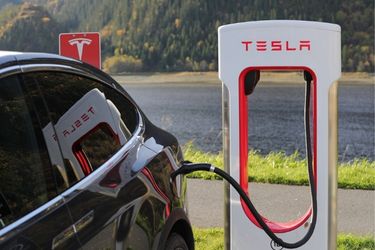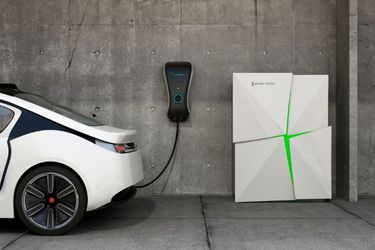
Written by Kayla Jane Barrie Updated on Dec 10, 2025 5 mins read

Have you purchased an EV? Or maybe you are on a wait list for one? You may be wondering where you can charge your electric vehicle and how to set up a system at home. You may be shocked to know it’s not as complicated as you think. Strides are being made to make charging easier and more accessible.
In 2021, the federal government announced $700 million to install an additional 50,000 EV chargers across Canada and have them operational by 2026. Closing the electric vehicle charging infrastructure gap is key to moving forward to having all light-duty cars and passenger trucks are zero emission by 2035. Whether you have a full EV or a hybrid vehicle, you’ll need to know how to charge it.
In this blog, we outline how to EV charging tips, what the process looks like, what it can cost, and if it will affect your car insurance.
Once you receive your new ride and set up electric car insurance, you’ll want to understand the process of charging your car. Charging your electric vehicle occurs by connecting the vehicle to a power source, typically referred to as a charging station. The charging port and onboard charger convert the external power into energy for the battery, allowing it to gain power.
EV charging is like filling up with fuel, but you’ll insert a connector at a charging station. Here’s how it works:
Depending on the car model, battery size and output of the charging station, it can take anywhere from 15 minutes to eight hours to charge your EV. Here is a look at the different types of chargers.
| Type | Volts | Charging Speed |
|---|---|---|
| Level 1 | 120 | 8-10 km per hour |
| Level 2 | 208-240 | 20-130 km per hour |
| Level 3 | 400-900 | 5-32 km per minute |
Most Level 1 chargers come with the vehicle and can be used with any standard 120V outlet. Level 2 chargers are usually sold separately from your car, and require a bit more setup because they need to be plugged into a 240V outlet. There is a wide range of charging stations you can invest in for your home. Be sure to check out incentives and rebates to lower costs.
Before 2021, Tesla did not offer charging for non-Tesla vehicles. As of November 2021, they announced a plan to update select stations in some countries to charge a wider range of vehicles. Drivers of these cars need to use the Tesla smartphone app (version 4.2.3 or higher). Then tap on the new ‘Charge Your Non-Tesla’ option and add a payment method to get started.
Some locations may not have this option yet. EV owners can use a Tesla charger, but they will likely need to use an adapter to connect to the power source as the Supercharger Pilot rolls out. These adaptors cost between $150 to upwards of $300.
While you are out and about and need to charge up, there are various options available. There are Level 2 public charging stations that are free to use, and some that require a fee are priced between $1.00 per hour and $2.50 per charge. Level 3 chargers are often pay-per-use or by the minute. On average, it will cost $15-20 per hour.
As of March 2022, at home charging costs Canadians around $277 per year, depending on the vehicle, charging time (off-peak or on-peak), and charging system. With gas costing around $1.50 per litre (as of November 2022), EVs are almost half the price (if not more) to charge compared to fuelling up weekly, even if you have a fuel-efficient vehicle. Some of the best electric trucks can also have lower charging costs compared to fuelling up weekly
Ditch standing in the cold to fuel up for charging your EV at home. All electric vehicles come with a Level 1 home connector kit. This will support charging your vehicle at a 110/120 V outlet. If you are seeking a faster charge, you can install a Level 2 charger, but it will need a 240 V outlet.

Consider where you park (you don’t want your charger directly in extreme weather), where the available outlets are, cord length, and how often you drive. You will also want to speak with your home insurance provider to see if installing one will impact your costs.
Public EV charging stations are located at grocery stores, gas stations, offices, and select parking lots. They are open to the public for free or at a small cost, which can be paid through an app or the charging station. Using a public EV charging station is as easy as following a few simple steps.
Electric vehicles are made with lithium-ion and lithium polymer batteries because of their high charge energy storage and lightweight. They are also often used in consumer electronics such as laptops and cell phones. Different EV models use one of the three types: cylindrical, prismatic, and pouch-type.
Since May 2022, Canadians have had access to more than 16,000 chargers at over 6,000 public charging stations, according to CVMA. Over the past two years, the number of public chargers available to drivers has increased by 39%.
You can fully charge your electric vehicle within 30 minutes to over 12 hours. Depending on the size of the battery and the speed of the charger, you can calculate the charging length.
If you've been browsing through best electric vehicles in Canada, you’ll be thinking about what charging station to have at home. At-home chargers can cost between $700 and $1,500, and this can be done through a Licensed Electrical Contractor (LEC), who will evaluate your electric panel and determine the best option. You can visit the Government of Ontario to learn more about charging rebates.
Some EV charging stations are free, but the majority of them have a fee. You can check online before choosing which one to stop at.
Some batteries receive power through regenerative braking. This process uses torque to propel the car, recapturing the energy that is lost and used later. This can improve the charge, but it is not the primary source of charging.
As Canada continues to grow their EV charging infrastructure, many gas stations have charging stations available, but not all. You can find stations by visiting PlugShare, ElectrifyCanada and ChargeHub. You can also use the option in Google Maps.
Transportation accounts for 25% of Canada’s greenhouse gas emissions. As the country moves towards EV charging stations, the Zero Emission Vehicle Infrastructure Program (ZEVIP) is a $680 million initiative that will end in 2027. Its goal is to address the lack of charging and refuelling stations in Canada; one of the key barriers to drivers switching over.
| Categories | Auto |
|---|---|
| Tags | Driving TipsElectric |
Read our insurance blog to get helpful tips, information and news.
Has your car been totalled in an accident? Is your car a write off? Learn about vehicle write offs for a total loss insurance claim.
Get the facts on Toronto's auto theft problem. We break down the data, reveal the most-stolen vehicles (including the Honda CR-V and Lexus RX 350), and show which neighbourhoods are most affected.
Dive into the world of auto theft with our blog on the most stolen cars in Canada. See the most stolen cars across Canada, including provincial lists for Ontario and Quebec, and learn how high-risk models can affect your car insurance premiums.
Drive safe this winter! Check out these tips for driving in snowy and icy conditions in Ontario. Get other helpful info and FAQs on winter driving.